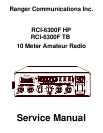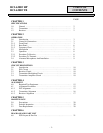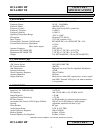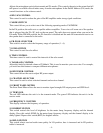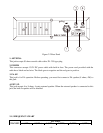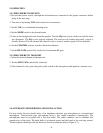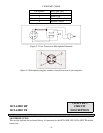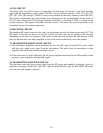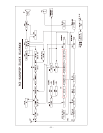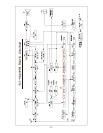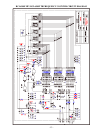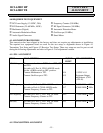- 8 -
2.3 OPERATION
2.3.1 PROCEDURE TO RECEIVE
1. Be sure that power source, microphone and antenna are connected to the proper connectors before
going to the next step.
2. Turn unit on by turning
VOL
knob clockwise on transceiver.
3. Set the
VOL
to a comfortable listening level.
4. Set the
MODE
switch to the desired mode.
5. Listen to the background noise from the speaker. Turn the
SQ
knob slowly clockwise until the noise
just disappears. The
SQ
is now properly adjusted. The receiver will remain quiet until a signal is
actually received. Do not advance the control too far or some of weaker signals will not be heard.
6. Set the
CHANNEL
selector switch to the desired channel.
7. Set the
RF GAIN
control fully clockwise for maximum RF gain.
2.3.2 PROCEDURE TO TRANSMIT
1. Select the desired channel of transmission
2. Set the
MIC GAIN
control fully clockwise.
3. If the channel is clear, press the push-to-talk switch on the microphone and speak in a normal voice.
2.4 ALTERNATE MICROPHONES AND INSTALLATION
For best results, the user should select a low impedance dynamic type microphone or a transistorized
microphone. Transistorized type microphones have a low output impedance characteristic. The
microphones must be provided with a four-lead cable. The audio conductor and its shielded lead
comprise two of the leads. The third lead is for transmit control and the fourth is for receiving control.
The microphone should provide the functions shown in schematic below (Figure 2-3).



